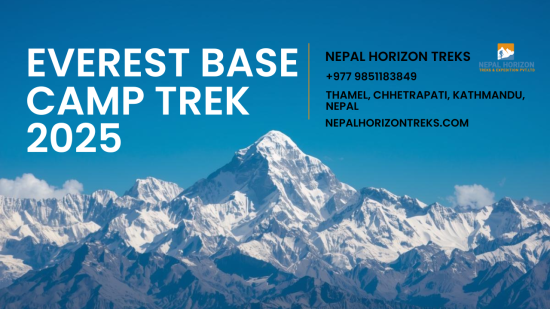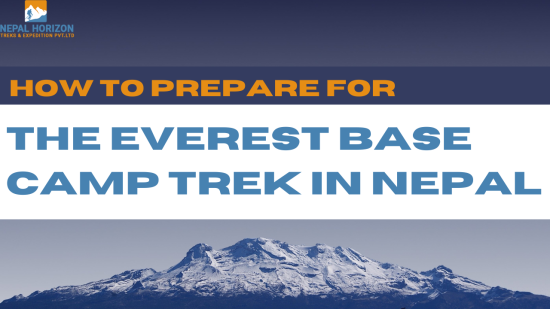Annapurna Circuit Trek in October
7th March 2020

October is that the best time of the year for Annapurna Circuit Trek. It provides a much better view of the mountains like Mount Annapurna, Mount Dhaulagiri, Mount Machhapuchhre, etc. The weather is often less cloudy, and you'll get a more unobstructed picture of the great natural thing about the Best Annapurna region.Annapurna Circuit trek in October month will offer you to understand about different tribes, mountainside cultures. You'll get a great chance to explore the tremendous unique cultural and traditional practices in the Annapurna Circuit trek. Furthermore, October marks the period of celebrations in Nepal. The two main festivals of Nepal, Dashain, and Tihar fall during this month. As you trek to the Annapurna Circuit, you'll get an opportunity to be a neighborhood of such culture and tradition if you I would like it. Our Trek to Annapurna Begins from the beautiful and gorgeous village name as the Besisahar, which is inside the Marshyangdi river plus eventually completes up within the Kali Gandaki gorge. It always takes 10 to fifteen days to finish this trek. One of the main highlights of this trek is crossing the Thorong La pass located at 5,416 meters. It's the foremost challenging, and therefore the highest expire the circuit. Crossing this pass seems like an achievement. The stunning view of the Himalayas is often seen from now. So, if you're planning on trekking to the Annapurna Circuit Trek in October, you've got made the proper decision.
Some important Highlights of Annapurna Circuit Trek in October
- There will be a perfect climate and season.
- Enjoy the fantastic and eyecatching views of a series of mountains starting from 6000meters to 8000meters like Annapurna I, II, III, & IV, Machhapuchhre, Nilgiri, Tilicho, Dhaulagiri, Manaslu, and other peaks of this region.
- The highest point of Annapurna Circuit is Thorong La Pass is one of the famous viewpoints within the Annapurna region.
- The Tilicho lake the very best altitude of 4919m within the world.
- Kali Gandaki Gorge, the deepest canyon within the world.
- Muktinath temple with 108 water taps may be a famous Hindus and Buddhists temple.
- Natural thermal spring at Tatopani to relax.
- Poon Hill is another excellent viewpoint after Kala Patthar in Nepal.
- Watch the gorgeous sunset and sunrise from Poon hill and Thorang la pass.
- Pokhara is the valley known as the lake valley.
- In October, the ceremony like Dashain and Tihar I slices, so it is the main attraction point for all tourists.
- Beautiful village with ethnic groups of Gurung and Magars.
Itinerary Day 01: Land in Kathmandu. When the jet you're flying on lands at the Tribhuvan International Airport of Kathmandu, our staff will receive you. They're going to escort you to your hotel. The hotel is going to be comfortable and well facilitated. Take some rest in your room. During the evening, you'll enjoy walking around the touristic destinations in Kathmandu. Thamel may be a famous touristic center where you'll experience the night-life. Or you can directly take rest to repose your body—overnight in Kathmandu. Day 02: Free and arrangement day Today is your second day in Nepal. Today may be a free day. Today, we'll invite you to our office. We'll demonstrate our trek. You'll meet together with your guide and your entire trekking team. Also, you'll get ideas from us on the packing lists and trekking gears. We will also assist you in buying or renting your trekking gear. Today, you'll also visit some beautiful natural and cultural sites within the Kathmandu valley. There exist numerous UNESCO world heritage sites in Kathmandu. You'll visit an amount of those places also. You can visit the notable Durbar Squares in Kathmandu, Bhaktapur, and Patan. At those places, you'll see the traditional cultural monuments. You'll take a sight of the unique structures and architectures of the past. There are two important Buddhist pilgrimages in Kathmandu. They're Swoyambhunath and Bouddhanath, the most critical Stupa. You'll also visit the historical temples just like the Pashupatinath Temple and, therefore, the Changu Narayan temple. After the free day, steel oneself against the subsequent day. You'll continue the trek following day—overnight in Kathmandu. Day 03: Drive to Bulbule (923m) Estimated time: 10.5 hours Ride Time: 7.5 hours Hiking Duration: 3 hours Maximum Altitude: 932 meters Get able to travel after early morning light breakfast. Our hotel agent will pick you from your resort and can accompany you to the bus terminal. From there, you'll get on a vehicle. It'll drive you from Kathmandu to Bulbule. Starting the drive from Kathmandu, you'll reach Besisahar over the comfortable highway. The last driving point is at Besisahar. Besisahar may be a place with an immense market. From Besi Sahar, you'll start your real trek. The hike from Besisahar to Bulbule takes approximately three hours. The path from Besisahar to Bulbule is gorgeous. You'll walk past a group of natural waterfalls. Also, you'll hit some suspension bridges. Walking past the lush fields of rice feels impressive. After attending, you’ll reach Bulbule. From Bulbule, you'll see beautiful views of Himalchuli and Manaslu 2 towards the north. Overnight in Bulbule. Day 04: Bulbule to Chyamje (1400m) Estimated Time: 5 to six hours Today’s trek starts after having a warm and satisfying breakfast in Bulbule. Today, you'll leave on the trekking trail towards Chyamje. The trek starts with a simple trek. Later you'll make an ascent towards the Bahun Dada. Bahun Dada may be a beautiful village of Brahmin inhabitants. The town sits over an impressive ridge. From Bahun Danda, the trail descends. You'll trek across the gorgeous terraces and streams. Now, you'll rejoin the Marshyangdi river. You'll continue hiking past some waterfalls and cultivated lands. On the way, you'll cross various suspension bridges over the Marshyangdi river. On walking for a few times, you'll reach a cliff in Jagat. Standing over the cliff, you'll see the gorgeous Marshyangdi river streaming below. You'll also enjoy the views of the encompassing hills from there. After walking for a brief while, you'll reach Chamje. Overnight in Chyamje. Day 05: Chyamje to Bagarchhap (2160m) Today, you'll begin to trek after having a pleasant breakfast at Chyamje. The trail starts with a climb uphill. Following the rushing Marshyangdi river, you'll walk towards Tal, 1710 meters. Today’s walk is lovely. You'll witness tons of changes within the scenarios while trekking. Setting off towards Tal, you'll again follow a steep uphill climb. After climbing the steep, you’ll end up on the highest of a beautiful ridge. You'll still trek by crossing a bridge. The trail stretches uphill through a small and delightful valley. If you're traveling in Summer, you'll see beautiful waterfalls there. Now, it’s time that you simply correctly enter the Manang district. The resort at Tal is the gateway to Manang district. From there, you'll rise an extended stone stairway. You'll still trek uphill and downhill till you reach Dharapani, 1890m. At Dharapani, there are many chortens, several of which are centuries old. From Dharapani, you'll walk uphill to succeed in the village of Bagarchhap. The town has typical stone houses with flat roofs. The locals are Buddhist. Within the city, you'll see the influence of Tibetan culture. Overnight in Dharapani. Day 06: Bagarchhap to Chame (2630m) Today, you'll be leading above the stone trails. Most of the trekking path is rough and rocky. You'll start to trek from Bagarchap. The route from Bagarchap climbs up to an area called Tyanja. From Tyanja, the trekking path proceeds through a forested section. Walking across a river, you'll reach Kopar, 2590m. From Kopar, you'll again continue trekking towards Chame. After walking for a particular time, you'll reach Chame. Chame is the headquarter of Manang. It's a gorgeous place in some markets. From Chame, you'll see the luxurious views of the gorgeous Annapurna II. you'll also visit the two small hot springs nearby. Overnight in Chame. Day 07: Chame to Pisang (3300m) Estimated Time: 5 to six hours Maximum Altitude: 3300 meters After a pleasant breakfast in Chame, we continue our trek towards Upper Pisang. Leaving Chame, you'll cross a bridge over the Marsyangdi River. You'll trek towards an area named Bhartang. The path crosses the small Marshyangdi river valley through the grand forests of Hemlock and Pine trees simultaneously. On the trail, you'll see pretty bottoms. The aspects of the different mountains are extraordinary. On walking over the easy trekking trails, you'll reach Bhartang. From Bharthang, you'll ascend uphill through the forests of firs, pine, and hemlock. After a while, you'll reach an area called Dhukur Pokhari. During the walk, you'll get the primary sight of the bowl-shaped Paungda Danda rock face. On continuing further, you'll reach Pisang. You'll see many lodges at lower Pisang. A concise uphill climb of lower Pisang will take you to Upper Pisang. Upper Pisang offers sumptuous views of Annapurna II towards the south. you'll also visit a gompa at the upper Pisang. Overnight in Pisang. Day 08: Pisang to Manang (3500m) Estimated Time: 6 to eight hours Maximum Altitude: 3500 meters Wake up early if you would like to ascertain the mesmerizing sunrise view. The vista, when the primary ray of sun shines upon Annapurna II, is astounding. After having breakfast at Pisang, you'll start to trek. You will start trekking towards Manang. On the trail, you'll enjoy the floral and faunal diversity at high altitude. You'll also see the gorgeous gorges and a few alluring peaks including Annapurna II, Annapurna III, and Pisang Peak. You will still trek through the gorgeous hills, lush jungle, and wetlands. Today, you'll walk towards the dry regions of Manang. You'll see varying landscapes, beautiful stupas, and a lama school on the way. Two routes diverge at lower Pisang. Both the courses are the trek routes to Manang. Both of them meet at a community named Barga. The north way maybe a longer one. It takes a further two hours if you trek through this route. This route is sort of demanding but offers far better sceneries than the opposite direction. Barga may be a big village with many inns and shops. There's a 900-year-old monastery within the town. After resting for a few times at Barga, you'll trek towards Manang. After one hour walk from Barga, you'll reach the village of Manang. Overnight in Manang. Day 09: Acclimatization day in Manang Today is your acclimatization day in Manang. Acclimatization may be a day of rest where you'll adjust your body with the thin air and better altitudes. During today, you'll hike to some places around Manang for sightseeing. There are many places to go to. You'll visit the Milarepa cave. Also, you'll continue a hike to Khangsar. There's this spectacular view of Tilicho peak, which you'll enjoy during this hike. You'll additionally attend the Gangapurna Glacier Lake. Overnight in Manang. Day 10: Manang to Ledar (4250meters) After using a splendid event at the Manang district, you'll lead towards Ledar. You'll start to trek after having a pleasant breakfast in Manang. From Manang, the trail passes uphill. You'll follow the path uphill to the Thorong La pass. You will over follow the trail extending the steady uphill grade through Tenki. On trekking further, you'll leave behind the alluring Marshyangdi Valley. You'll keep walking along a river called the Jarsang Khola. Walk along the Jarsang Khola river valley. You'll finally reach Ledar. Cedar may be a beautiful place. While trekking towards Ledar, you'll see the greenery and vegetation getting steadily more sparse. Day 11: Ledar to Pedi/High camp (4,600meters) Today, you'll be leading from Ledar to Pedi. Pedi is additionally named because of the high field. You'll depart towards Pedi after having a warm breakfast at Ledar. The trekking route dips right down to a river. After passing the river, the trail moves uphill towards Pedi. You'll maintain walking uphill till you reach Pedi. There are some guesthouses at Pedi. They're good and that they provide the necessary facilities. You'll stay for the overnight at one among the lodges. Day 12: Phedi to Mukti Nath (3,710meters). Estimated time: 7 to eight hours Maximum Altitude: 3710 meters Today may be a long and troublesome day on the trek. You want to start early before it’s sunrise. You'll be converging the Thorung La Pass, 5416 meters. While walking at normal speed, it takes around 5 hours to work in the past from Manang. You want to move there before 10 am. After 10, the strong wind force adds difficulty while traveling at the Thorung La Pass. Crossing the pass is hard. You'll climb steeply over the regular trekking route. Be careful! Be careful with the symptoms of hypoxia while crossing the pass. you want to descend right down to ground altitudes if you see any signs of it. Also, there could be some snows at the trail. Be careful with the iced rocks. A few hours after climbing (4 hours appx.), you'll reach the very best point on the pass. There you'll see the chortens and prayer flags dancing with the chilly wind. You'll also see the magnificent views of the environment from the highest of the pass. On advancing to trek along the descending tracks, you'll enter Muktinath. Trek of Thorung La Pass to Muktinath is approximately 4 hours walk. The ‘district behind Himalaya,’ Mustang may be a wonderful place. Overnight in Muktinath. Day 13: Mukti Nath to Jomsom (2750meters) via Kagbeni. Estimated time: 4 to five hours Maximum Altitude: 2750 meters Muktinath may be a site of religious and aesthetic significance. It's the house to the Muktinath Temple and various other monasteries. This makes Muktinath a famous journey of Hindus and Buddhists. Today, you'll visit the sacred shrine. Local people at Muktinath believe that attending the temple will assist all our troubles and anxieties. There are 108 water sprouts around the temple, which is one of the main tendencies. People take a shower on the iced water emanating from the water sprouts. Hindus celebrate a specimen image at the temple as Lord Vishnu. Buddhist worship a comparable image as Bodhisattva Avalokitesvara. The Jwala Mai Temple and, hence, the spring is the numerous demonstrations of the place. There's an eternal flame that gets fueled by the original source of gas. After visiting the holy sepulcher at Muktinath, you'll trek towards Jomsom through Kagbeni. From Muktinath, you'll fall right down to an area called Jharkot. On the way, you'll come to an area where there are ruins of a palace. The manor belonged to the King of Mustang. You will maintain descending considerably towards Jharkot. At Jharkot, you'll detect a fortress. The fortress sits above the hill. You'll also see some chortens and gompas on your way down. On descending further, you'll join Kagbeni village. The Kagbeni valley sits at the junction of two rivers: Kali Gandaki and Jhang Khola. At the Kali Gandaki River, you'll find some black stones. Hindu worship these stones (Saligram) as a sort of Lord Bishnu. You will trek moreover towards Jomsom. On the way, you'll walk through the Pandha Khola valley and Lubra. After driving for about an hour, you'll lead Jomsom. Overnight in Jomsom. Day 14: Jomsom approach to Tatopani (1190meters) Natural thermal spring Jomsom may be a beautiful place. After having a pleasant breakfast at Jomsom, you’ll ride from Jomsom to Tatopani. The ride is exciting. You'll enjoy the gorgeous landscapes around. After riding a few times, you'll reach the Tatopani. Tatopani may be a place that's famous for natural predicament spring. Many trekkers take a bath in the spring. A shower at home relieves your pain and stresses within the muscles. Overnight in Tatopani. Day 15: Trek right down to Ghorepani (2850m) From Tatopani, we'll trek to the impressive village of Ghorepani. Today is one of the first glorious days on the trek. You'll see the inspiring Himalayan ranges while hiking. Also, the route is rich in unique cultures, traditions, and diverse tribes. On your way from Tatopani to Ghorepani, you'll walk across beautiful villages of Gharkhola, Ghara, Shikha, Phalante, and Chitre. You'll observe different people of various ethnicities. The culture and traditions of the locals are encouraging. Ghorepani may be a charming village of typical Magars and Gurungs. At Ghorepani, there are numerous lodges and homestays where you'll visit for overnight. Day 16: Trek to Poonhill – trek right down to Ghorepani and Nayapul – back to Pokhara Wake up early within the morning. Today, you'll be hiking to Poon Hill to ascertain the sunrise view. It takes 45 to an hour to succeed in the Poon Hill from Ghorepani. The morning view from Poon Hill is the best one. The first beams of sun shining over the glittery Himalayas look lovely. After enjoying the sunrise view, trek right down to Ghorepani. From Ghorepani, trek to Nayapul. Nayapul is the place where you'll find buses to repel to Pokhara. The approach from Nayapul will take you around 1.5 hours. You can walk around the roads of Pokhara and luxuriate in the nightlife. Overnight in Pokhara. Climate and Temperature Condition of Annapurna Circuit Trek in October October falls within the autumn season in Nepal. Autumn is considered one among the simplest seasons for trekking to the Annapurna Circuit. In October, the number of tourists who visit Annapurna a circuit is being developed due to the agreeable weather and temperature the season offers. Several tourists trek to the present region to experience a clean and fresh area after the Monsoon period. The weather is usually warm on the lower reaches of the Circuit. It's a mean temperature of about 15 Degrees Celsius throughout the day, and night temperatures continue over freezing. The temperatures down as you get higher in altitude. From about 4000meters up the heat in evenings / early mornings are freezing. Overall, the weather of the Annapurna Circuit in October is exceptionally fitting for trekking. October comes back to the monsoon session in Nepal and is understood because of the post-monsoon period. So during this point, you'll not need to worry about occasional rainfall while trekking. However, it's always better to hold rain gear to avoid unwanted circumstances. Difficulties you would possibly face while Trekking to Annapurna Circuit Trek in October Trekking to the Annapurna Circuit is undoubtedly tough as you think that. You would like to steer through many uphill and downhills and different twists and turns, to succeed in your final destination. Along with side mental strength, fitness is what gives your trek light challenging. Weather and temperature also matter while managing the problem level of your trek. Luckily, October is that the time which offers you with perfect weather and temperature, making it the most straightforward time of the year for Annapurna Circuit trek. During October, you'll not need to worry about walking during a muddy trail and fear of getting slipped along the way. Since October is that the post-monsoon period, there's little or no chance of rainfall within the Annapurna region. The highest elevation on the trek, 5416 meters at Thorang La pass, maybe a hair-raising pass in Nepal. The quantity of oxygen reduces at the highest of the pass to half the oxygen stumped level. This is often a severe challenge as less oxygen and high altitude triggers hypoxia. Likewise, the problem level depends upon the sort of trekker you're. If you're someone who is employed to trekking to a better attitude, the Annapurna Circuit trek might not be challenging for you. But, if you're someone who no trekking experience, this trek could also be pretty challenging for you. So, to someone that hasn’t trek before, October would be most desirable for you to possess a less challenging trekking adventure. Food and Service in Annapurna Circuit Trek in October You will have many options for food and accommodation along the thanks to the Annapurna Circuit. Most of the teahouses and lodges are going to be hospitable assist the trekkers through October. You will have a teahouse accommodation with double distribution beds throughout your trek. The teahouses will present you with a white room consisting of a bed, a mattress, a pillow, a blanket, and an attached bathroom, and It depends upon the sort of accommodation you select. You'll take hot showers if you pay the specified charge. Taking about food during the trek, you'll have a spread of options on the menu. From traditional Nepali cuisine to international cuisine, you'll enjoy all sorts of meals. The foremost popular one is national Nepali food, Dal Bhat, and seasonal vegetables along with side pickle. You'll find other food items like bread, pasta, pizza, burger, sandwich. You'll also get beverages like tea, coffee, hot lemon, drinking water, etc. During October, the teahouses and restaurants also will get packed due to the height season. Due to this, you'll need to wait for an extended queue to possess your meal. Confirm to book for your food and accommodation early to avoid the effort during the trek.
Why Trek in October?
Amazing Weather You will always have weather on the paths of the Annapurna region within the day. The nights might get cold, but it's bearable. You'll get unobstructed views of the encompassing area while trekking on the Annapurna trail. You won’t get to manage any rain gear or worry about the snow-covered trails, which can make your trek more comfortable.
No Fear of Rain
The Annapurna Circuit trail is found within the rainshadow area of Dhaulagiri and Annapurna massifs. So, you're far away from the parasites and, therefore, the slippery trails while trekking in October. While trekking, you'll experience pleasant temperatures and dry weather.
Celebrate the main Celebrations in Nepal
Dashain Dashain is the principal celebration of the Hindus. This festival celebrates the ease of Goddess Durga. People praise this festival for two weeks. This celebration falls in late September or early October. Consistent with the Nepalese calendar, it begins on the brilliant lunar fortnight and lasts till the day of the complete moon. Nepal is a sight to behold during Dashain. People renovate their houses to form them even more beautiful. People that have left their homes to figure or study return to celebrate this occasion with their families. Various local fairs also are held, and another famous attraction is that the makeshift swings made from bamboo. People also fly kites, and this is often a well-liked sort of entertainment during Dashain. It is an excellent opportunity to enjoy the traditional Hindu culture during this point. You'll even be a neighborhood of the celebrations and delight. Tihar Tihar is the second most vital festival in Nepal. People celebrate this festival in October or November. It comes to a couple of weeks after Dashain. People decorate their houses with lights and vibrant colors during this festival. They also use diyos, which may be a traditional clay lamp. They fill the diyos with oil, and cotton dipped into it to light it up. So Tihar is additionally referred to as the festival of lights. Apart from this, people also dance, play cards, sing, and luxuriate in various other sorts of entertainment. Deusi and Bhailo are popular activities around Tihar, which are when people make groups and visit different houses singing door-to-door. Tihar is by-far the foremost beautiful festival with its colorful Mandap and Diyos. Incredible Landscape View You can see tons of magnificent crystal unobstructed views of mountains on the trail of the Annapurna trekking route. Annapurna Circuit trails are renowned for beautiful amazing natural views. You'll see the logical look of Nepal, which incorporates alpine trees, green barley fields, and high geographic scenarios. You can witness different behaviors of the people and their culture. You'll explore various animals and vegetation within the region.
Packing List for Annapurna Circuit Trek in October
Important Documents
- Always carry a legitimate passport, visa, extra passport size photos, and ticket
- Proof of Insurance
- There are going to be no ATM so send Nepali currencies in cash for tips, and getting Visa
- Photocopy of your passport and visa
- Trekking permits
Other Items
- Windcheater
- Windproof trousers
- Thermals
- Down Jacket
- Gloves
- Shell jackets
- Sleeping bags
- Trekking T-shirts
- Trekking socks
- Hiking boots
- Bandana or headscarf
- Sunglasses
- First Aid kits
- Water purification tablets
- Multi-purpose soap
- Sunscreen
- Medicines against fever, diarrhea, headache, cold, etc
- Hand Sanitizers
- Toilet paper
- Quick-drying towels
Tips for Trekking to Annapurna Circuit in October
- Bring Good pairs of hiking boots.
- Make your luggage as light as possible.
- Wear the proper amount of clothing.
- Always stay hydrated to avoid getting hypoxia.
- Get Travel Insurance
- Pack some snacks for the trek.
- Get proper trekking gears
- If you've got to require any medicine, carry enough medication for the entire trek
- Carry essential medications like pain relief sprays, Cetamols, Diamox, etc.
- Do not forget to gather permits.
- Take enough rest. Don't rush.
- Try to pre-book your rooms and tickets since it's a high season.
Conclusion
October is that the ideal time to trek to Annapurna Circuit. Most of the travelers travel during this season, which makes it the first high season. You ought to always prepare yourself physically and mentally to finish this sort of trek. You can contact us to book your trip. We organize a far better trip which can be hassle-free and more relaxed. For further inquiries, email us and that we will revisit you soon. [contact-form-7 id="380" title="Blog Contact"]
Recent From Blogs

28th October 2025

25th October 2025

24th October 2025

18th October 2025

14th October 2025

12th October 2025

10th October 2025

7th October 2025






